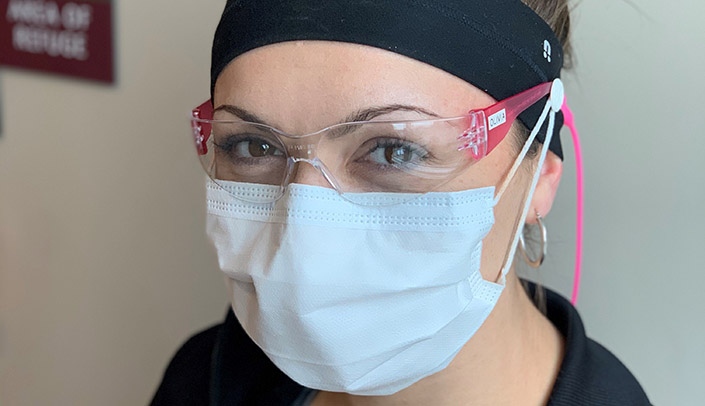In order to protect the health and safety of colleagues, anyone who has direct interactions with patients should wear eye protection. The hospital has an updated universal personal protective equipment (PPE) policy. Over that time, the organization has secured enough inventory to ensure colleagues in all patient care areas have eyewear.
“The goal here is to keep you safe,” said Micah Beachy, D.O., vice president and chief quality officer at Nebraska Medicine and associate professor of internal medicine at UNMC. “Since patients without typical symptoms can transmit the virus, the addition of eye protection on top of wearing a mask offers another layer of protection.”
Those working in a clinic or patient care area who do not have eye protection can contact their manager. Review helpful FAQs.
“We continue to see community spread within Douglas County and are not yet seeing a significant decline,” Dr. Beachy said. “We must stay vigilant and protect ourselves from possible exposure so we can continue to care for our patients.”
